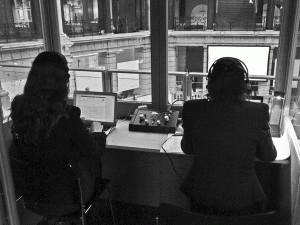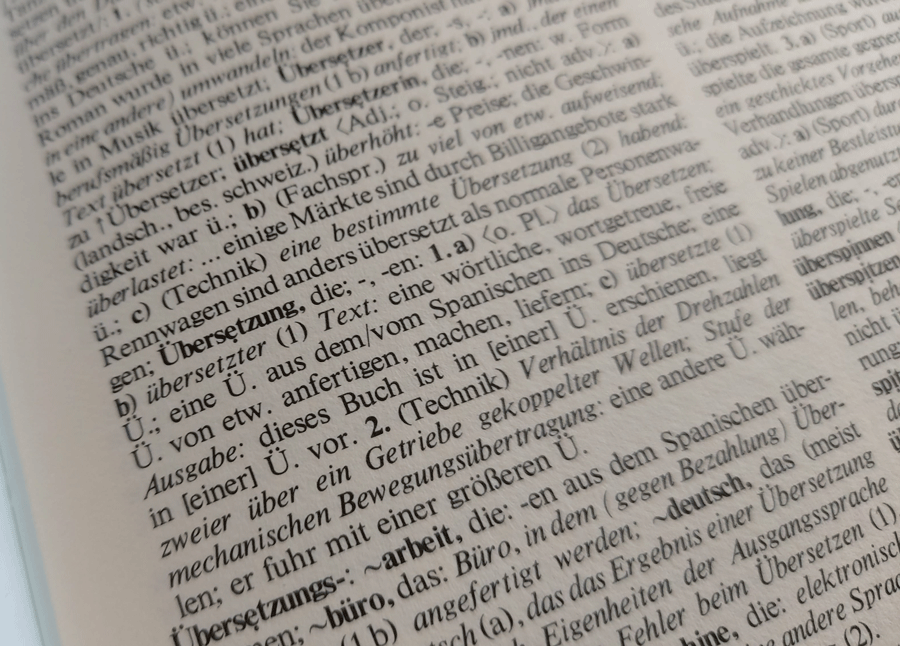Simultaneous interpreting …
… is a form of interpreting that is applied especially at bigger conventions such as conferences, congresses, but also at press conferences or workshops.
Simultaneous interpreting is particularly offered in accordance with two or more orators or at a convention hosting many international participants.
A particular advantage to this form of direct interpreting is that interpreting can take place in several languages without adding additional time expenditure, thus allowing a greater number of participants of different languages to be contacted without complication.
The conference interpreter passes the information simultaneously, or respectively with only a short delay, of the orator into the target language. He interprets in a specialised, soundproof booth which is generally set up in a such a way that the interpreter can see the orator and the presentation and can also watch over the entire hall.
From within the booth, and via headphones, the interpreter can hear the orator and thereby he speaks his translation into a microphone. Likewise, the participants of the conference also receive the words of the interpreter via headphones, so they can, in effect follow, the performance in ‘real time’.

The participants of the conference have the ability to adjust the volume and choose their language on the receiving device (headset).
Simultaneous interpreting is an extremely demanding occupation which requires the interpreter to undergo numerous parallel thought processes:
He processes two types of information: one involving a high level of linguistics, the other involving non-linguistic material (gestures, pitch of voice etc, but also graphics, diagrams or the like) which he must then analyse in the quickest time possible, so that what was previously spoken is equally adequate in content and in style once it is translated into the target language.
This form of language transfer requires a lot of energy and concentration, and therefore an interpreter is unable to perform for hours at a time. Therefore regular breaks must be taken in order to refuel so that he is able to continue interpreting with new energy. As a general rule, two interpreters (three in special cases) from Norbert Zänker & Kollegen will work together as a team. They alternate orators or work at regular intervals (circa every 20 minutes).
Initially, simultaneous interpreting was seen less as the traditional consecutive interpreting, the so called ‘king discipline’. However, since then it has accomplished itself due to its much higher time efficiency.

